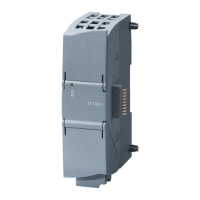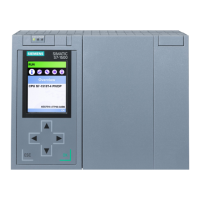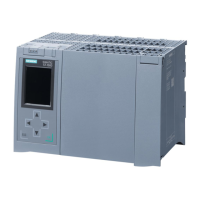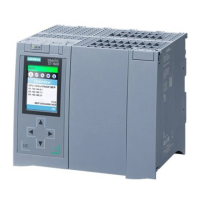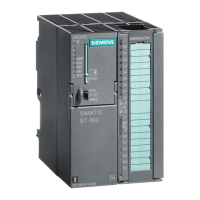Extended instructions
8.6 Pulse
S7-1200 Programmable controller
System Manual, 03/2014, A5E02486680-AG
365
Because the CPU processes the request when the CTRL_PWM instruction is executed,
parameter BUSY will always report FALSE. If an error is detected, then ENO is set to
FALSE, and parameter STATUS contains a condition code.
The pulse width will be set to the initial value configured in device configuration when the
CPU first enters RUN mode. You write values to the Q-word location specified in device
configuration ("Output addresses" / "Start address:") as needed to change the pulse width.
You use an instruction such as a move, convert, math, or PID box to write the desired pulse
width to the appropriate Q word. You must use the valid range for the Q-word value (percent,
thousandths, ten-thousandths, or S7 analog format).
Note
Digital I/O points assigned to PWM and PTO cannot be forced
The digital I/O points used by the pulse
-width modulation (PWM) and pulse-train output
(PTO) devices are assigned during device configuration. When digital I/O point addresses
are assigned to these devices, the values of the assigned I/O point addresses cannot be
modified by the Watch table force fun
ction.
Table 8- 148 Value of the STATUS parameter
PWM identifier does not address a valid PWM.
Operation of the pulse outputs
Pulse width can be expressed as hundredths of the
cycle time (0 to 100), as thousandths (0 to 1000), as
ten thousandths (0 to 10000), or as S7 analog format.
from 0 (no pulse, always off)
to full scale (no pulse, always on).
Since the PWM output can be varied from 0 to full scale, it provides a digital output that in
many ways is the same as an analog output. For example, the PWM output can be used to
control the speed of a motor from stop to full speed, or it can be used to control position of a
valve from closed to fully opened.
Four pulse generators are available for controlling high-speed pulse output functions: PWM
and Pulse train output (PTO). PTO is used by the motion control instructions. You can assign
each pulse generator to either PWM or PTO, but not both at the same time.

